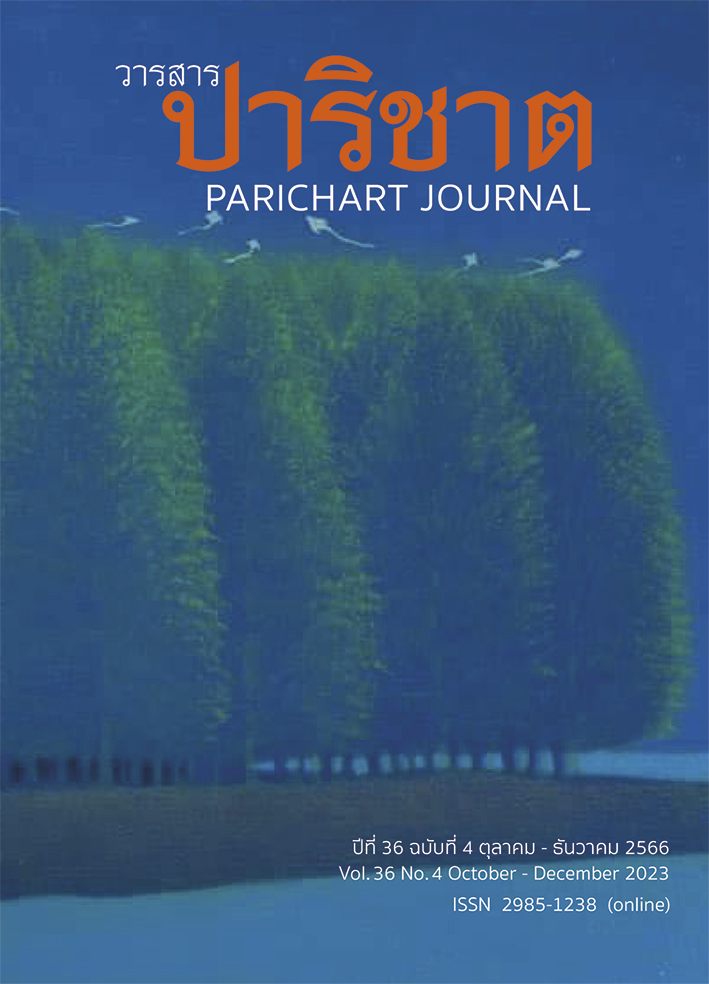The Roles of Actor/Teacher in Creating Youth Community Theatre: Empowering and Re-Connecting Youths with their Community in a Partnership School Project, Pichit Province, Thailand
Main Article Content
Abstract
This study documented the community theatre process for young people led by facilitators from the Play-Spirit Studio and examined how their processes and roles impacted the development of the youths. The program was implemented in four schools in Pichit Province, Thailand, with each project lasting five days. The facilitators used the community theatre process, working with youths between the ages of 9-12 and 13-18 as an intervention in 4 schools, encouraging them to create narratives based on their community. The narratives functioned as a learning process for the youths and as a production for the community audiences. The facilitators' leadership in the process provided a safe learning environment for the youths to explore social issues, assume roles in drama, and reflect on themselves. This was a transformative experience for both the young people and their teachers. The young people developed communication, team-working, and resilience skills through the theatre process while the teachers recognized the youths’ potential and the importance of community engagement in the young people’s learning.
Article Details

This work is licensed under a Creative Commons Attribution-NonCommercial-NoDerivatives 4.0 International License.
References
Prentki, T. (2009). Introduction to intervention. In Tim Prentki and Sheila Preston (ed.), The Applied Theatre Reader. (p. 181-183). Routledge.
Joongpan, C. (n.d.). Ecological system theory. Unpublished report for class Art and Sciences of Learning, Faculty of Learning Science and Education, Thammasat University.
Dhamrung, P. (2014). Applied theatre: Using theatre for development. Chulalongkorn University.
Downey, A. (2007). Theatre in education. In Adam Blatner (ed.), Interactive and Improvisational Drama: varieties of Applied Theatre and Performance. (p. 99-109). iUniverse.
McGregor, L., Tate, M., & Robinson, K. (1977). Learning through drama: Report of the schools’ council drama teaching project (10-16). Goldsmiths’ College, University of London. Heinemann Educational.
Jungwiwatanaporn, P. (2004). Creative drama for children. Institute of Academic Development.
Slade, P. (1995). Child play its importance for human development. Jessica Kingsley.
Adams Jr., & Charles, N. (2013). TIE and critical pedagogy. In Anthony Jackson and Chris Vine (ed.), Learning through theatre: The changing face of theatre in education. (p. 287-303). Routledge.
Preston, S. (2016). Applied theatre: Facilitation pedagogies, practices, resilience. Bloomsbury.
Nicholson, H. (2009). Theatre and education. Palgrave Macmillan.


